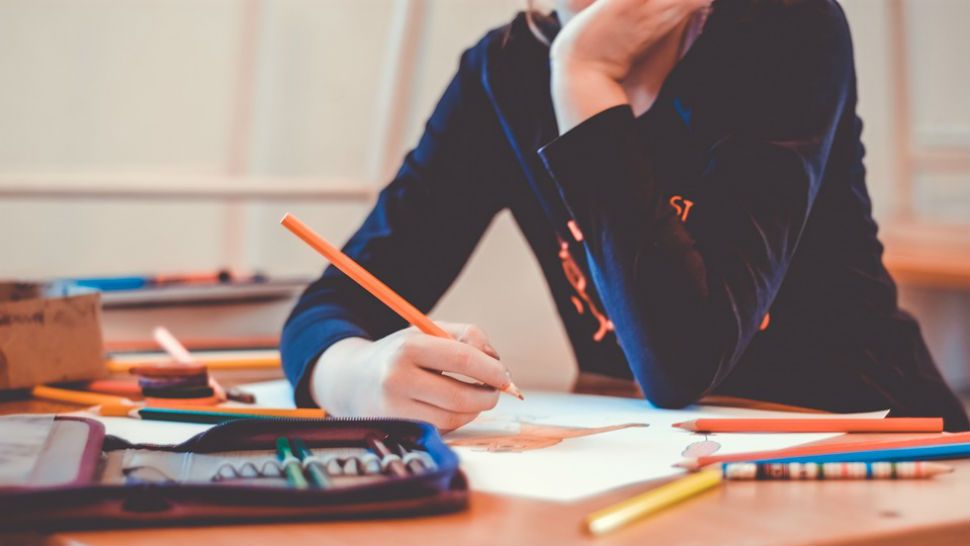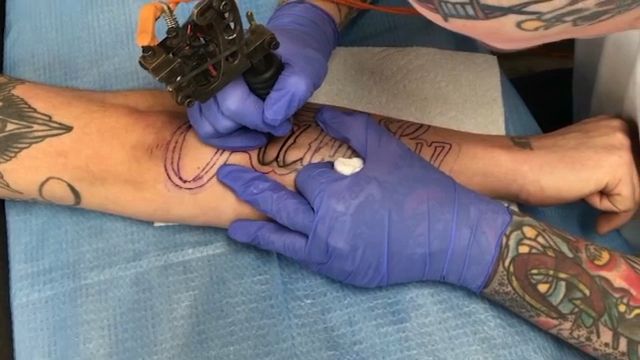Last week, Governor Andrew Cuomo ordered schools to remain closed until April 15. Most students have been learning from home for about two weeks at this point, and many virtual classrooms are still very much in the adjustment phase.
Ashley Kenyon recently marked her fourth year as an English as a Second Language teacher at Troy Middle School. She says every day is different as they figure out their new normal.
“It was such a whirlwind going into this that everyone is kind of figuring it out as we go – trial and error right now,” said Kenyon.
Once the school district made the decision to close, teachers had roughly two days to pull lesson plans, make paper copies, and make sure their students were equipped with everything necessary to learn digitally.
“It’s a whole different ball game. I’m used to seeing kids every day; I’m used to talking with people in person and collaborating that way. Delivering lessons in the classroom looks really different than delivering something online,” said Kenyon.
A normal day of online teaching for Kenyon starts at 8:15. She checks in on her co-teacher’s Google classrooms, sees which students are doing work and who has questions.
She holds daily office hours via Google Meet, where she can walk students through homework, and post various questions and reading material. As an ESL teacher, the virtual barrier becomes an even greater challenge.
“Not having the students right next to me to translate something is difficult,” said Kenyon.
Students are not strictly required to turn in assignments right now, but out of Kenyon’s 36, all but two have been active online. When asked how her students are navigating – Kenyon said she’s seen mixed performance.
“I have a lot of kids who are really tech savvy and confident online, so they’re really enjoying it. I have a few that are kind of worried about things because they need support in the classroom every day and doing stuff online isn’t their forte. It’s been a challenge to make it different or scaffold it for them,” said Kenyon.
The uncertainty about whether students and teachers will be able to return to the classroom this year weighs on Kenyon, but she has seen some positives come out of this difficult situation.
“I’ve never talked to teachers more than I’m talking to teachers now… I feel like this has really brought us together as a team to support our students, support the families, and support each other,” said Kenyon.
At Warrensburg Elementary School, Sheryl Davey has been teaching music for 18 years. Even with an extensive career in education – she says these are uncharted waters.
In the weeks leading up to their school’s closure, Davey had been worried that the spring concert would be canceled. She decided it would be best to record the students performing, so they’d at least be able to show their families online.
On a Friday afternoon – a few hours after Davey filmed the concert as a backup plan – the district made the painful decision to postpone the high school musical, all concerts, and cancel school on Monday so faculty and staff could meet.
“It doesn’t take a rocket scientist to know what’s coming. I think a lot of us went home from school on Friday suspicious,” said Davey.
On Monday, they got the news: School was closing and they had to pack up and prepare students. Davey is self-proclaimed and unabashedly anti-technology, so virtual teaching has been a huge hurdle.
“Kids are technology natives, and we are immigrants. We weren’t born into this technology. For kids, it’s second nature, and for adults, it’s acquired,” said Davey.
While some of Davey’s colleagues are trying to keep their online classrooms functioning in an official manner, she says that approach doesn’t work as well for art, music, and physical education.
Her students in Grades 3-6 are currently working on a music composition project. For this, Davey has older students write music and she provides a link to a keyboard app to record it. So far, Davey has only heard from about five of her students, and she’s trying not to get discouraged.
“You can plan these wonderful things, but how many people are checking in? That’s the weak link,” she said. “We need to acknowledge that without blame, because there are parents who may be working … and how many children can’t necessarily navigate it, who were already struggling in the classroom?”
Davey says while there is a concern that this mode of education is easy to disconnect from, there is a silver lining. She says parents are really stepping up to the plate, and believes that some children will thrive in an atmosphere outside of the classroom.
If there’s one thing Davey hopes all students use this time to for, she says it’s to be inquisitive.
“I really, really hope they’re going outside. I hope they are doodling. I hope they are drawing,” she said. “There’s a lot of structure in a public classroom and it’s convenient for teachers and it may not always be convenient for kids… kids need to have time that is not directed by someone else.”
While students are scheduled to return to their classrooms in a few weeks, the possibility lingers that schools could be forced to finish out the semester online.
The idea of finishing the semester at home is exceptionally difficult for Davey. She’s set to retire in June, and the virus has stolen her last year of teaching. Davey says she’s ready to branch out, but she’s not burnt out, and she isn’t quite ready to let go.
“It hit me really hard that I may have already conducted my last concert," she said.
She’s given herself a little time to be angry about it, but she says that more importantly, this has all served as a reminder that none of us are guaranteed anything.
As Kenyon and Davey navigate the difficult weeks ahead, they’re both focusing on keeping their spirits up, supporting students and parents the best way they can, and hoping they’ll be back in their classrooms before the school year’s end.







